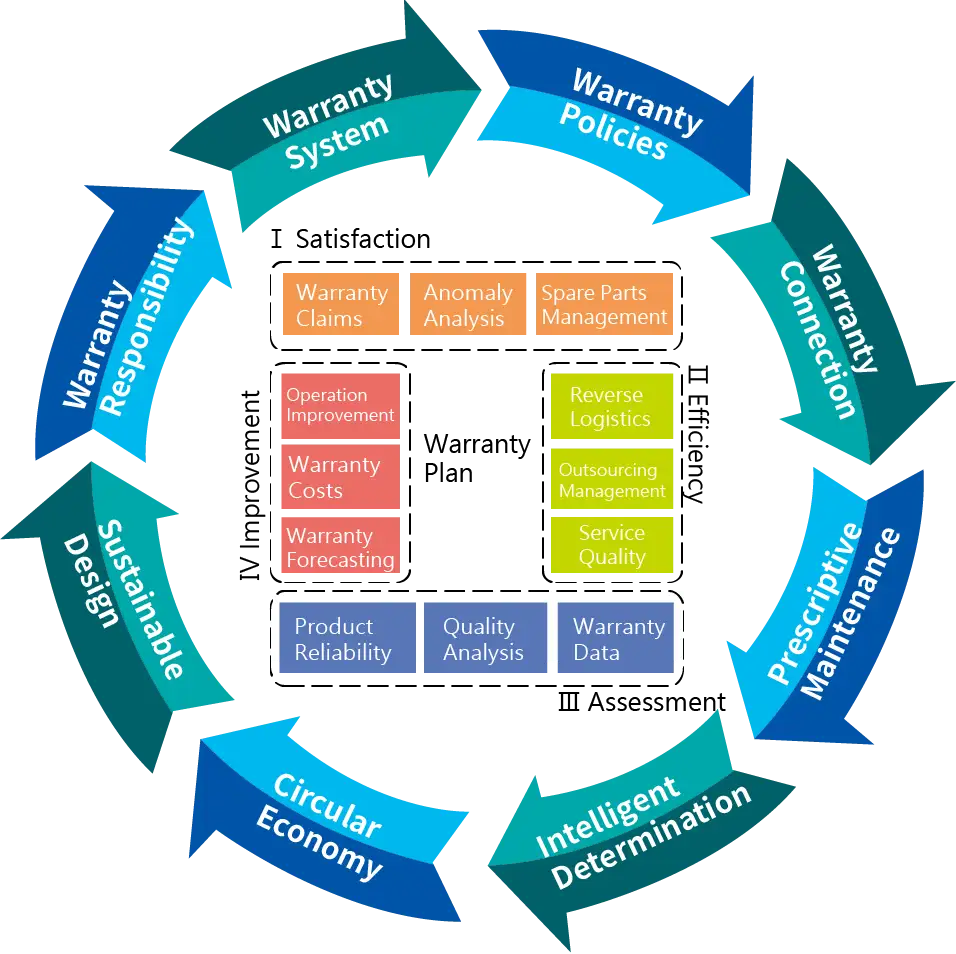This book aims to provide a systemic viewpoint for enterprise to establish the warranty chain management system. This book includes warranty management practice, reverse logistics, product reliability engineering, data statistics and analysis, industry 4.0 and artificial intelligence, circular supply chain and sustainable design, and other basic theories and case descriptions. The author has many years' experience in academic and industrial management, and provides a management framework that especially takes into account (1) the implementation aspect - promotion of warranty plan and statistical analysis of data; (2) strategic aspect - digital application and sustainable development, with an overall system building point of view to describe the steps of warranty chain management step by step.
There are rich industry cases in this book which has highly reference value for students, researchers and practitioners. Also this book fits to be used as teaching and training material in engineering management, which builds an overview of the product life cycle management from warranty service till the recovery stage.

The book consists of 18 chapters divided into 5 parts. The content includes practical warranty management, reverse logistics operations, product reliability engineering, warranty data analysis, Industry 4.0 and artificial intelligence (AI), circular supply chain, and sustainable design. It covers fundamental theoretical introductions and application case explanations.
“During the past two decades, the bulk of publication on warranty management is largely based on the perspectives of statistics and operational research separately and most of the authors are academic researchers. There is an imperative to encourage more practitioners to publish their insights to further into warranty management. With the author’s rich academic and industrial experience, Dr Albert Liao’s new book can help university students and practitioners to gain a comprehensive understanding of warranty chain management. The book is supplemented by the introduction of digital transformation and sustainable development in after-sales service management and is an indispensable textbook for corporate trainees and university students. I am honoured to recommend this book.”
“Congratulations! Dr. Albert Liao's new book is very comprehensive and well-written. It frames the growing importance of automotive electronics on warranty, and how that changes what used to be purely mechanical into something electronic, hardware vs. software vs misuse or misconfiguration, and how that affects NTF, which continues to trouble enterprises. The book exhaustively covers the fundamentals of warranty management, including claims management, warranty insurance, warranty costs, warranty fraud, and warranty law. In general, the book is very thorough and comprehensive, recommended for enterprise training about warranty management.”
“The book contains extensive important and useful materials on warranty management. It would be a good contribution to the literature on warranty analysis. Congrats to the author to integrate a wide range of content in addition to the latest technology trend on industry4.0 applications, and extend service coverage to product end-of-life period. The book will help readers to analyze Warranty Data.”
This book refers to past advanced research and works, in order to arouse the interest of enterprise readers and senior college students in warranty chain management, this book tries to avoid complicated mathematical formulas and research theories. Instead, it starts from the perspective of practical experience and helps readers understand through warranty planning and strategy formulation.

1. Systematically establish warranty chain management elements and manage corresponding different product life cycle stages.
2. Based on the warranty contract with customers, how to avoid warranty fraud, and establish necessary warranty process control and spare parts management.
3. The scope and process of reverse logistics, how to establish a warranty service network and improve service quality.
4. The types of warranty data structures, how to process and analyze warranty data, and effectively improve operations.
5. How to use digital technology to improve the speed and quality of warranty management, establish intelligent judgment, and reduce warranty costs.
6. How to select a sustainable warranty path to establish a circular economic model and enhance product value.
7. Product maintainability and warranty responsibility, development trends of related regulations to enhance manufacturer responsibility.
8. Establishment of warranty chain management system, comparison of system maturity and introduction of well-known system platforms.

